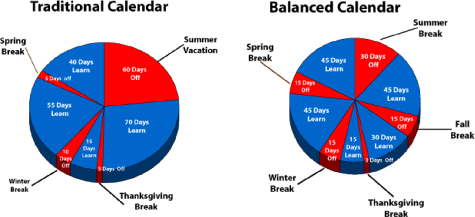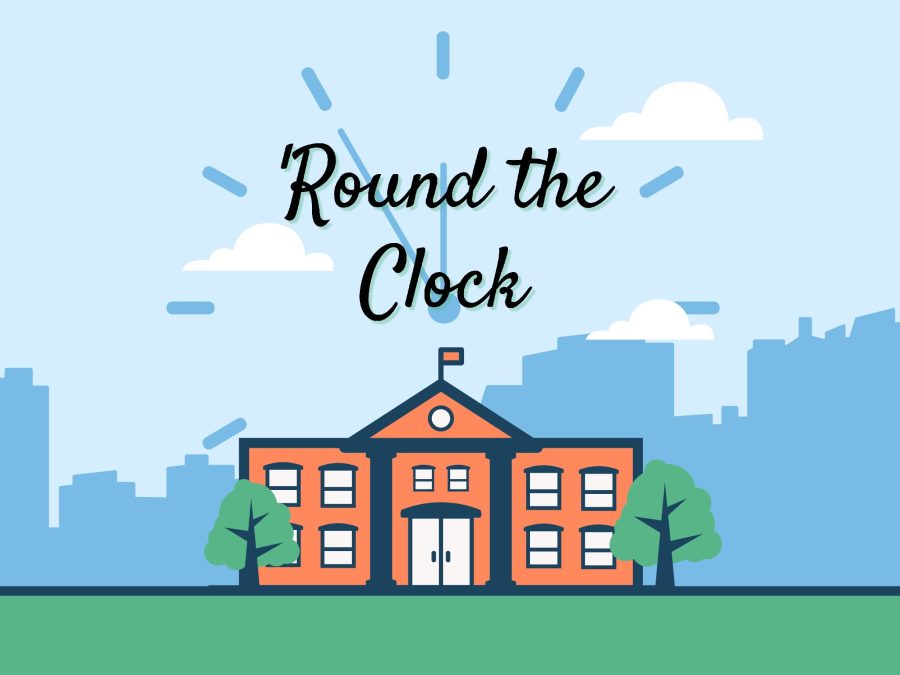‘Round the Clock
Year-round school makes sense, but it has some drawbacks.
The joy that comes to teachers and kids when summer hits is immense. Teachers do not have to remind students to turn in their homework, whilst kids do not have to do homework in general. Imagine the joy that could come if there were more breaks in a school year along with fewer consecutive weeks of school.
As scary as the phrase “year-round school” is, it is more beneficial than harmful. Being a junior in high school, I show up to school with a mental countdown until the next break in my head. There would be less stress on students if schools were to be on a year-round schedule.
The difference is not in the number of days in session or the number of days on break, but how the school year is broken up. Elkhorn has a traditional school schedule with seasonal breaks, summer being the longest. With that, there are teacher in-service days sprinkled throughout. Year-round school is the same amount of days in school and on break, but it’s formulated to students being in school for 60 days followed by a 20-day break. Of course, there are different ratios of days in school to days in break, but 60/20 year-round schedules are the most common.
I find it crazy that Elkhorn doesn’t have this type of system. When a new school year starts, there is bound to be a regress in what was previously learned. Teachers usually spend time revisiting topics that were learned in previous lessons due to the three-month break that is inherently too long. Ebbinghaus’ Forgetting Curve demonstrates that the longer in between periods of using information, the more information we will forget. The three months of summer are detrimental to the learning of students.
Even relatable to the Pomodoro method, which breaks studying or works down into intervals of 25 productive minutes to five minutes of break, it proves effective. The mind relaxes then goes back to work retaining all information previously learned. It may not suit everyone, but Pomodoro doesn’t imply cramming knowledge into a short amount of time, which traditional school is built to.
Although year-round school seems more logical, there is still a big majority of the traditional school schedule along with a push for a more defined schedule. Legislative Bill 1001, introduced by Nebraska State Senator Steve Erdman of Bayard, states that all schools in Nebraska would start after Labor Day and end before Memorial Day. This is a rigorous step in cramming information, which I’m sure all AP teachers reminded students not to do before the AP exams. Erdman states that in-service days prove useless and teach the young crowd that five days of work is unneeded. If the bill did go into effect, it would begin in the 2022 to 2023 school year.
This idea of a balanced calendar is unlikely to be implemented nationwide due to the culture of America. For legislators and kids alike, summers growing up were spent having fun outside with friends. During teenage years, it was spent at a part-time job during the day before spending nights with friends. A switch to a balanced schedule would limit, if not completely eliminate, this experience from new generations because the break would be too short for a part-time job but too long to be considered a normal school break.

Your donation will support the student journalists of Elkhorn High School. Your contribution will allow us to purchase equipment and cover our annual website hosting costs.

